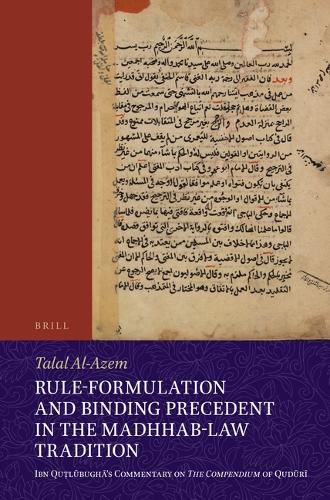Readings Newsletter
Become a Readings Member to make your shopping experience even easier.
Sign in or sign up for free!
You’re not far away from qualifying for FREE standard shipping within Australia
You’ve qualified for FREE standard shipping within Australia
The cart is loading…






In Rule-Formulation and Binding Precedent in the Madhhab-Law Tradition, Talal Al-Azem argues for the existence of a madhhab-law tradition' of jurisprudence underpinning the four post-classical Sunni schools of law. This tradition celebrated polyvalence by preserving the multiplicity of conflicting opinions within each school, while simultaneously providing a process of rule formulation (tarji?) by which one opinion is chosen as the binding precedent (taqlid). The predominant forum of both activities, he shows, was the legal commentary.
Through a careful reading of Ibn Qu?lubugha's (d. 879/1474) al-Ta??i? wa-al-tarji?, Al-Azem presents a new periodisation of the ?anafi madhhab, analyses the theory of rule formulation, and demonstrates how this madhhab-law tradition facilitated both continuity and legal change while serving as the basis of a pluralistic Mamluk judicial system.
$9.00 standard shipping within Australia
FREE standard shipping within Australia for orders over $100.00
Express & International shipping calculated at checkout
In Rule-Formulation and Binding Precedent in the Madhhab-Law Tradition, Talal Al-Azem argues for the existence of a madhhab-law tradition' of jurisprudence underpinning the four post-classical Sunni schools of law. This tradition celebrated polyvalence by preserving the multiplicity of conflicting opinions within each school, while simultaneously providing a process of rule formulation (tarji?) by which one opinion is chosen as the binding precedent (taqlid). The predominant forum of both activities, he shows, was the legal commentary.
Through a careful reading of Ibn Qu?lubugha's (d. 879/1474) al-Ta??i? wa-al-tarji?, Al-Azem presents a new periodisation of the ?anafi madhhab, analyses the theory of rule formulation, and demonstrates how this madhhab-law tradition facilitated both continuity and legal change while serving as the basis of a pluralistic Mamluk judicial system.